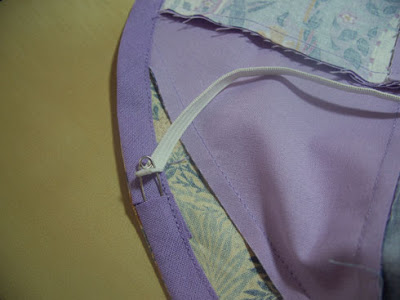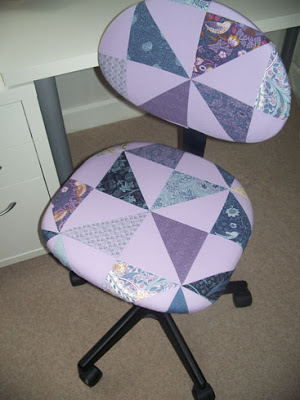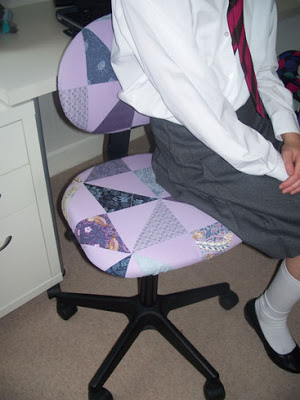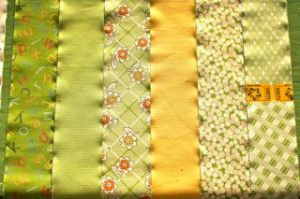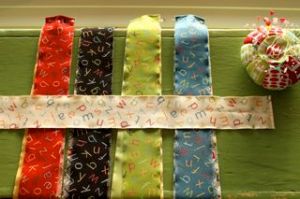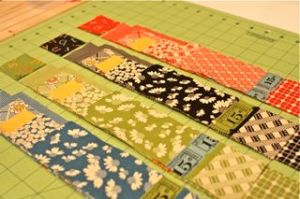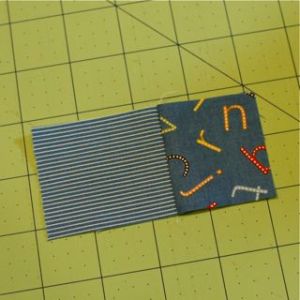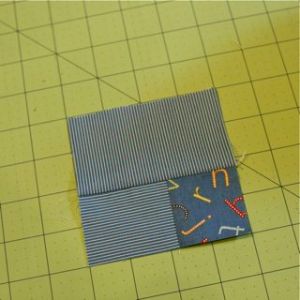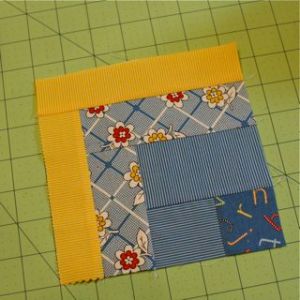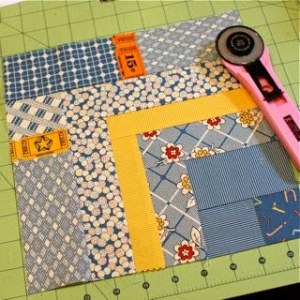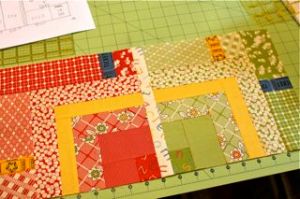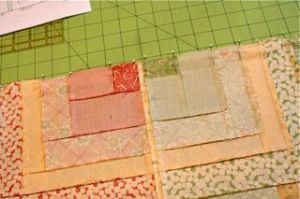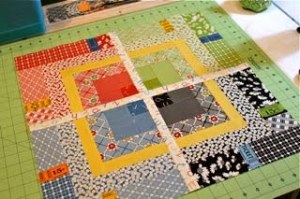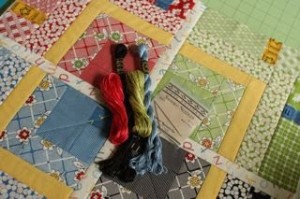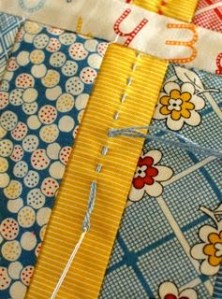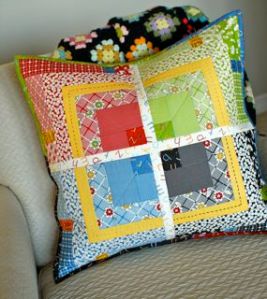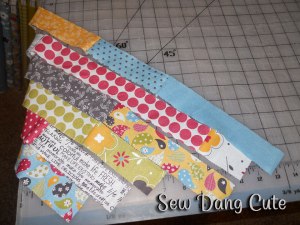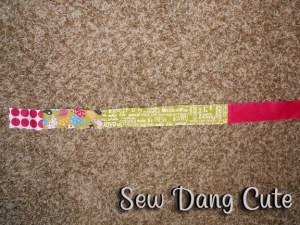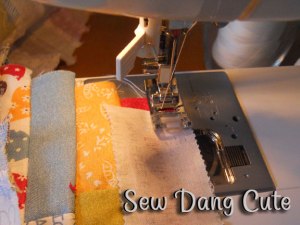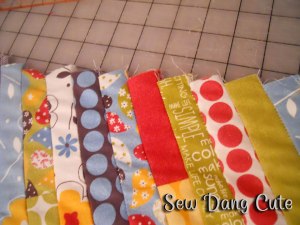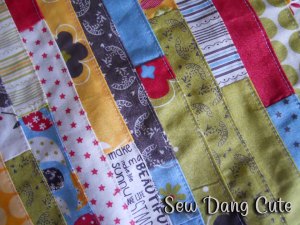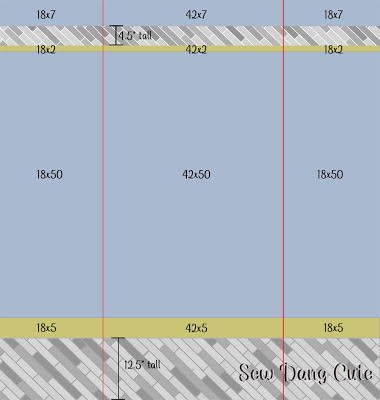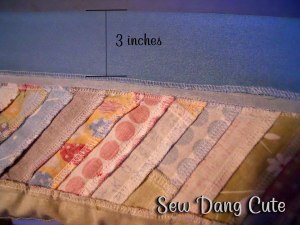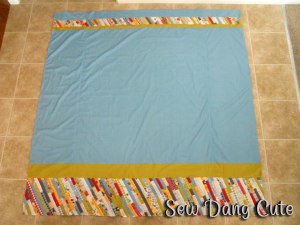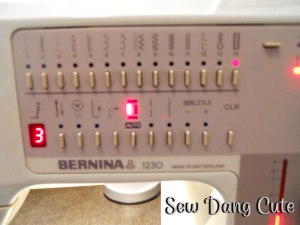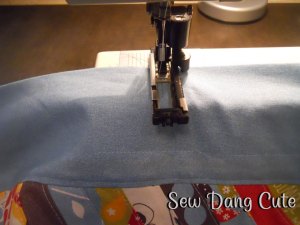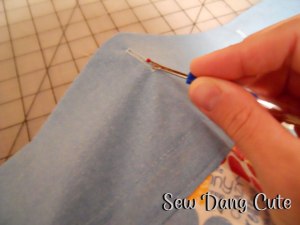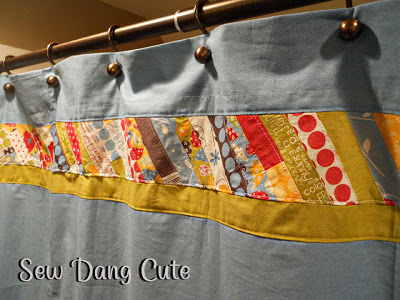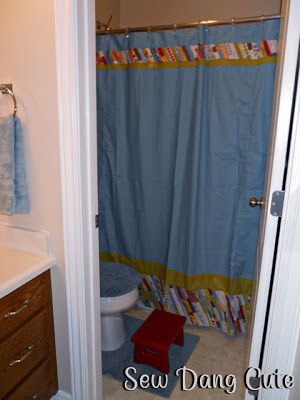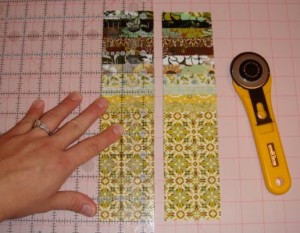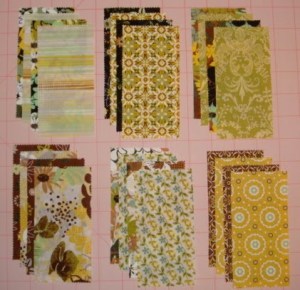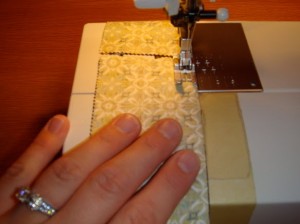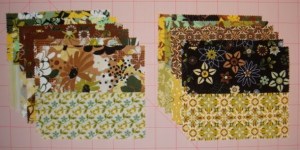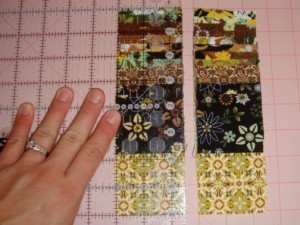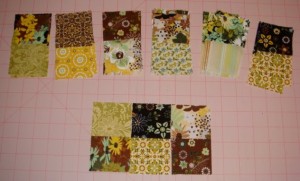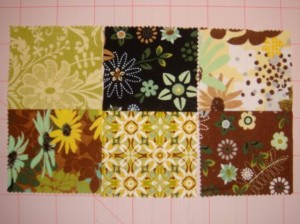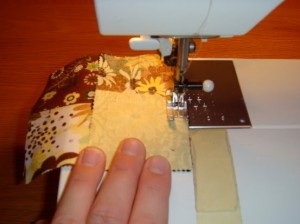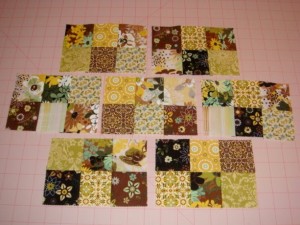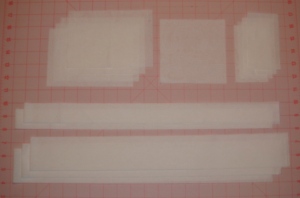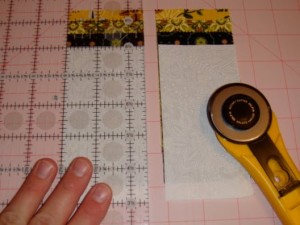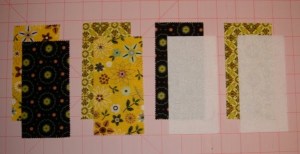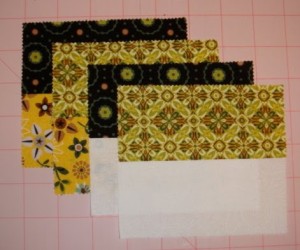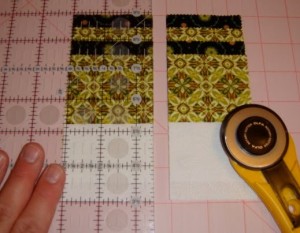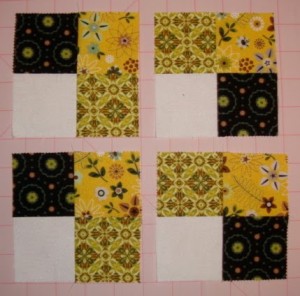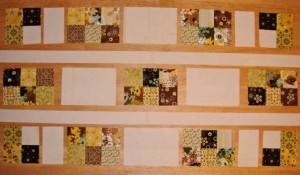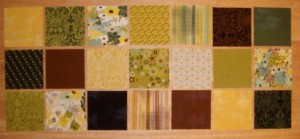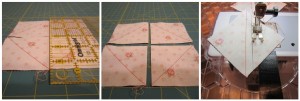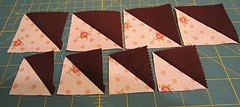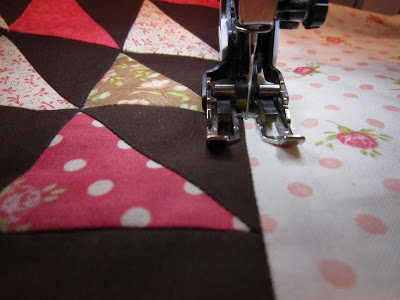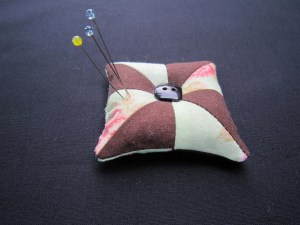Hello it Doug Leko from Antler Quilt Design, I am excited to share with you my second Moda Bake Shop Recipe with you.
- 1~ Candy Bar Bundle
- 5/8yd Background (Cream 14660-24)
- 1/4yd Inner Border (Red 14660- 22)
- 5/8yd Outer Border (Blue 14860-11)
- 3/8yd Binding (Blue 14860-11)

1/4” seam allowance used throughout.
WOF = width of fabric
Cutting Instructions:
From the Background Fabric Cut:
Three (3) 4 1/2” WOF Strips. Sub-cut into forty-eight (48) 2 1/2” x 4 1/2” rectangles.
From the Inner Border Fabric Cut:
Four (4) 1 1/2” WOF Strips.
From the Outer Border Fabric Cut:
Four (4) 4 1/2” WOF Strips.
From the Binding Fabric Cut:
Four (4) 2 1/4” WOF Strips.
From the Candy Bar Cut:
Thirty-six (36) 2 1/2” x 5” rectangles, into seventy-two (72) 2 1/2” squares.

Block Construction:
Draw a line from corner to corner on wrong side of the 72 2 1/2” squares.

1. Place one (1) 2 1/2” onto the right corner on one (1) the background rectangle. Sew from corner to corner and trim 1/4″ past seam line. Repeat with seventy-two (72) units as shown. Press out.



2. Gather twenty-four (24) of the units made in Step 1. Place a 2 1/2” square into the left corner of the unit. Sew from corner to corner and trim 1/4” past seam line. Repeat with twenty-four (24) units as shown. Press out.
3. Gather twenty-four (24) of the units made in Step 1 and twenty-four (24) of the units made in Step 2. Sew them together with one (1) unit made in Step 2 on Top and one (1) Unit made in step 1 on Bottom. Repeat to make twenty-four (24) 4 1/2” square. Press down.

4. Gather the twenty-four (24) units made in Step 3 and sew them in units as shown below. Repeat to make twenty-four (24) 4 1/2” x 8 1/2” rectangles. Press toward the right unit.
5. Gather the twenty-four (24) units made in Step 4 and sew them into units as shown below. Repeat to make three (3) units 8 1/2” x 16 1/2” rectangle. Press toward the left unit.

6. Gather three (3) units made in Step 5 and sew them into the center as shown below. Repeat to make one (1) unit 16 1/2” x 24 1/2” rectangle. Press towards right.
7. Attach Inner Border starting with sides first and then top and bottom. Repeat with Outer Border. Press out.

Quilt as desired,
Bind using your favorite method 
A Candy Bar Pinwheels Topper. Size Approximately 26” x 34” 
I hope you enjoy your new topper.
Check out other great patterns at {www.antlerquiltdesign.com}
Thanks,
Doug Leko










 4. Place a plain square on top of a patterned square, right sides together.
4. Place a plain square on top of a patterned square, right sides together.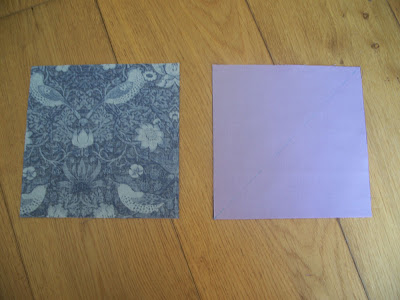 5. Sew a 1/4″ seam on both sides of the diagonal line that is marked on the fabric.
5. Sew a 1/4″ seam on both sides of the diagonal line that is marked on the fabric.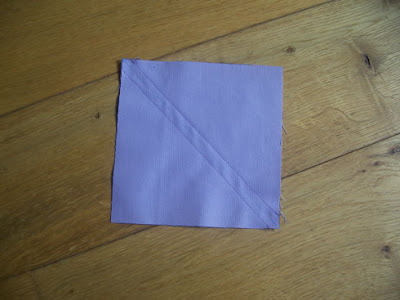 6. Cut along the pen line marked on the square.
6. Cut along the pen line marked on the square.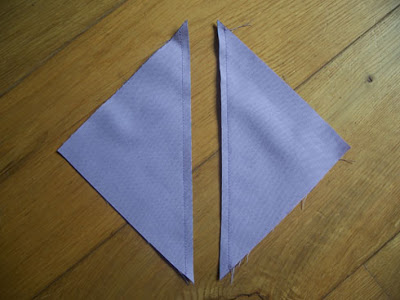 7.Press the triangles open to give two squares. Trim off any the ‘ears’ at both edges of the square. You should have 16 matching pairs Half Square Triangles (32 in total!).
7.Press the triangles open to give two squares. Trim off any the ‘ears’ at both edges of the square. You should have 16 matching pairs Half Square Triangles (32 in total!).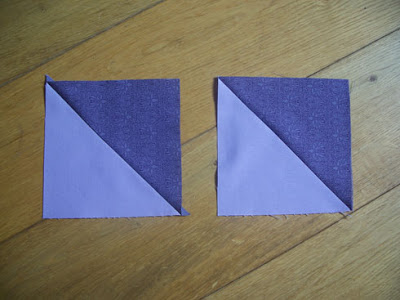 8. Take one of each fabric pattern and arrange Half Square Triangles in a 4×4 grid. Keep swapping them about until you are happy with the arrangement. Remember, the centre four will be the ones which will be seen on the on the seat. Sew the Half Square Triangles together.
8. Take one of each fabric pattern and arrange Half Square Triangles in a 4×4 grid. Keep swapping them about until you are happy with the arrangement. Remember, the centre four will be the ones which will be seen on the on the seat. Sew the Half Square Triangles together.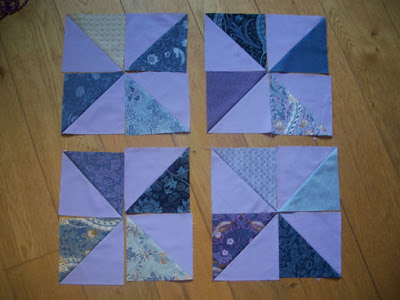 9. Make another 4×4 grid for the chair back, again swap them until you are happy with the arrangement!
9. Make another 4×4 grid for the chair back, again swap them until you are happy with the arrangement!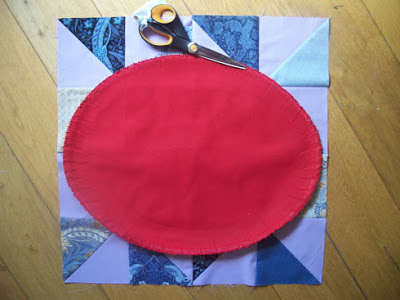 OR Place some heavy weight paper on top of the chair seat and using a felt tip pen, trace around the edge of the chair. Repeat for the back of the chair.
OR Place some heavy weight paper on top of the chair seat and using a felt tip pen, trace around the edge of the chair. Repeat for the back of the chair.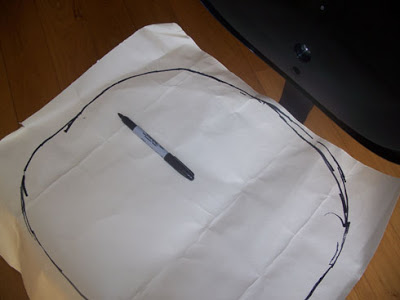 Cut out template. Place template on top of the seat to make it is the correct shape. Repeat for the back template.
Cut out template. Place template on top of the seat to make it is the correct shape. Repeat for the back template.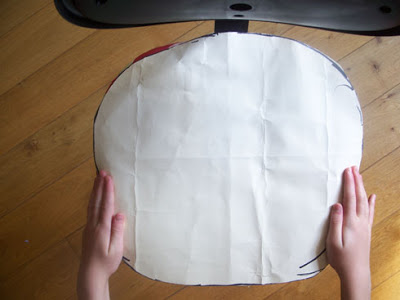 Add on approx. 2″ around the edge of the templates for both the seat cover and the back cover.
Add on approx. 2″ around the edge of the templates for both the seat cover and the back cover.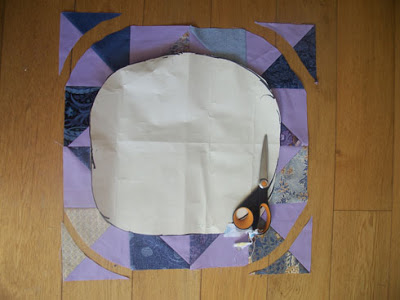 11. To make the casing for the elastic, fold in 1/2″ of the end of the bias binding, place on top of the seat cover, right sides together.
11. To make the casing for the elastic, fold in 1/2″ of the end of the bias binding, place on top of the seat cover, right sides together.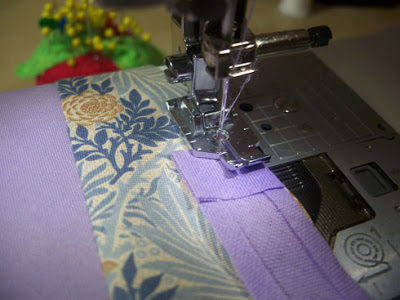 12. Using a scant 1/4″ seam, stitch in place around the entire seat cover, stopping 2″ from where the stitching was started. On the bias binding mark with a pin where the bias binding overlaps, cut off the binding 1/2″ from this pin.
12. Using a scant 1/4″ seam, stitch in place around the entire seat cover, stopping 2″ from where the stitching was started. On the bias binding mark with a pin where the bias binding overlaps, cut off the binding 1/2″ from this pin.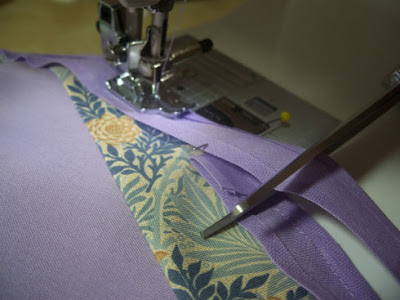
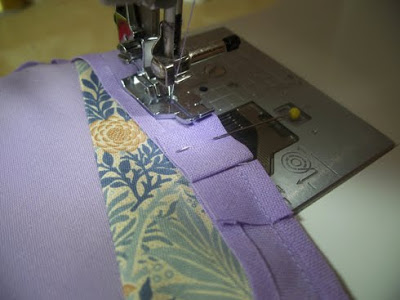 14. Fold the bias over onto the wrong side of the cover and pin in place.
14. Fold the bias over onto the wrong side of the cover and pin in place.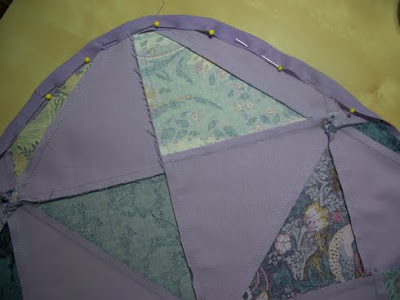 15. Sew around the inside edge of the bias binding to complete the elastic casing.
15. Sew around the inside edge of the bias binding to complete the elastic casing.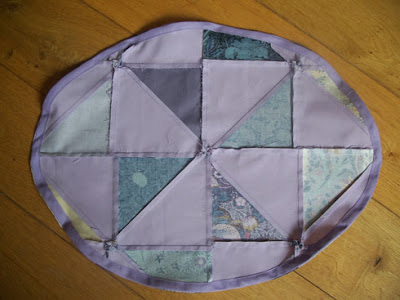 16. For the chair seat, cut a piece of elastic 22″ long and for the chair back, cut a piece 17″ long. Place a safety pin on the end of the elastic and thread it through the casing.
16. For the chair seat, cut a piece of elastic 22″ long and for the chair back, cut a piece 17″ long. Place a safety pin on the end of the elastic and thread it through the casing.